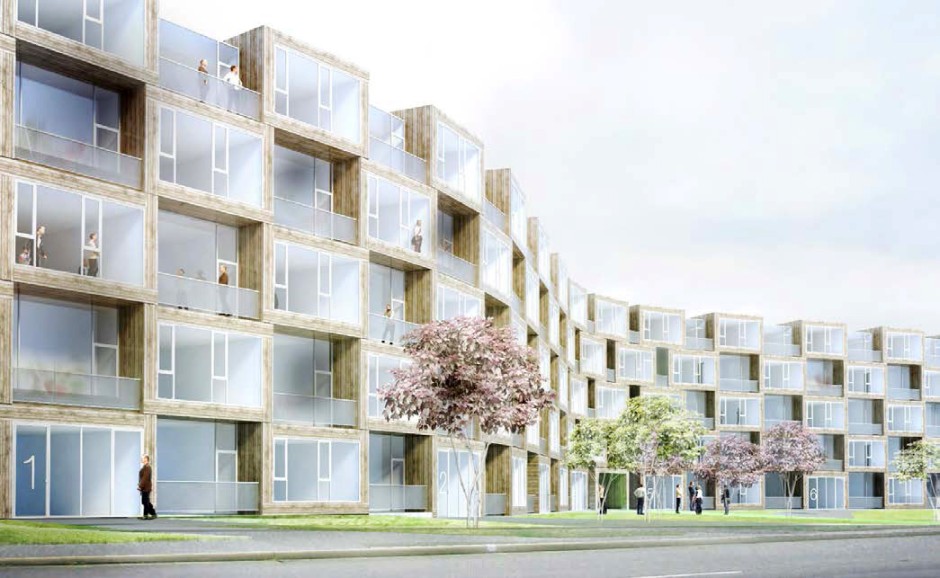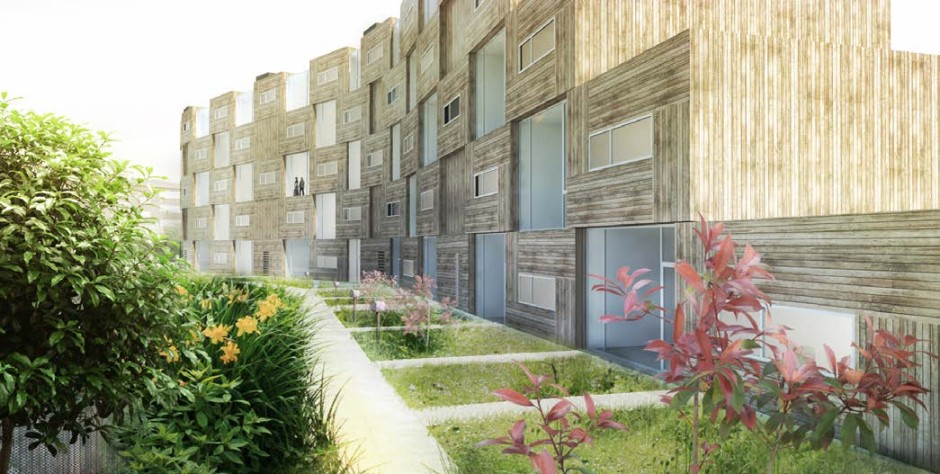BIG – Bjarke Ingels Group – is a large, international, conceptual architectural firm based in Copenhagen and New York. In recent years, BIG has garnered global recognition for several architectural accomplishments, including the award-winning “8 House” in Copenhagen; the Danish Pavilion at the Shanghai World Expo; and the “West 57” tower project near the Hudson River in Manhattan, which combines Danish qualities with American grandeur. It is not surprising that Bjarke Ingels and BIG enjoy star status in architectural circles.
“Concept and documentation are two different worlds today. Our goal is to make Archicad a tool for gathering these different tasks into one, cohesive workflow,”
Jakob Andreassen, BIM Manager at BIG

Together with the rest of the construction industry, BIG has in recent years made a change from traditional 2D and 3D tools to modern BIM software. The office is strongly reliant on freedom to design without restrictions and on their ability to produce new proposals and visualizations on-the-spot. For this reason, Rhino 3D, with the Grass- hopper add-on to allow parametric programming, is an indispensable part of the office’s workflow. Many of the most creative and conceptual architectural offices in Denmark have also chosen these tools.
Archicad
over Revit
Jakob Andreassen is the BIM Manager at BIG and is responsible for creating a bridge between the concept development and documentation phases; documentation is increasingly in focus. “Concept and documentation are two different worlds today. Our goal is to make Archicad a tool for gathering these different tasks into one, cohesive workflow,” explains Jakob Andreassen.
For various reasons, the implementation of BIM has not been entirely stress-free at BIG. The architects feel the chosen BIM software, Revit, is too restrictive and incompatible with sketching. They also found it difficult to establish and foster a good workflow between Rhino and Revit.
In order to put the obvious advantages of BIM to the best possible use, BIG has decided to replace Revit with Archicad for the Copenhagen office’s new projects. Archicad is the more flexible BIM tool. Developed by architects for architects, it focuses on graphic presentation and offers a built-in library of general building components. As a result, it is considerably faster for BIG to use Archicad as a documentation tool.
At the same time, there has been a change in the way BIG sees BIM tools. Jakob Andreassen no longer thinks that one can count on a single tool to be the best method for coping with all the various parts of a good architectural workflow: “Four years ago, we thought that everyone should use a single BIM application. Now, we are convinced that deploying several specialized tools, each aimed at a sub-task, is the best way of going about things.” Archicad was created for architects, but can be linked to other programs that are used by engineers to develop models.
Archicad
implementation
To ensure that an investment in BIM does not lead to boxes of software sitting on shelves and employees attending courses they won’t be able to apply in practice, BIG has joined forces with BIM Equity to create a strategy for implementing BIM in the form a series of specific, ‘dedicated’ pilot projects. What this means is that BIM Equity trains the documentation team for each project just before starting the documentation phase. In the first months, the office borrows the software licenses free of charge, while BIM Equity provides ample staff support. After the pilot period is done, the office can decide to invest in licenses. This way, BIG can feel confident that they are not choosing the wrong software or too many licences — and be sure that BIM adds value and improved work processes from day one.

The first
pilot project
BIG has designed four Revit projects in Denmark, and is now working on four projects using Archicad. The first pilot project with Archicad is a residential building project at the DONG site in Copenhagen, an unusual task on many levels. It sets out to promote a strong design concept in the shape of residential boxes stacked one on top of another — clearly, an unconventional approach. There are five stories incorporating prefabricated wooden elements. Apartments will have large glass partitions and one or more balconies each — another highly individual architectural design on the part of BIG.
The combination of wooden elements and split stories for each residential box means that it is hard to discern all the junctions in the building and its fundamental construction is less evident. From the beginning, there is a requirement for close cooperation between architects and engineers, as is the case in MOE, a Danish engineering company. The necessary collaboration between the consultants, coupled with the complexity of construction, makes BIM the perfect tool for programming this specific type of construction. However, it is BIG’s long term goal to migrate all their planning and documentation to BIM in Archicad.
Jakob Andreassen is already finding that architects take much more easily to Archicad than Revit, and this makes working with BIM easier. BIG sees BIM software as a promising means of collating all project information and making it easier to concentrate on the architecture in future BIG projects.
BIG
www.big.dk
BIG – Bjarke Ingels Group – is a large, international, conceptual architectural firm based in Copenhagen and New York. In recent years, BIG has garnered global recognition for several architectural accomplishments, including the award-winning “8 House” in Copenhagen; the Danish Pavilion at the Shanghai World Expo; and the “West 57” tower project near the Hudson River in Manhattan, which combines Danish qualities with American grandeur. It is not surprising that Bjarke Ingels and BIG enjoy star status in architectural circles.
BIM Equity
www.bimequity.com
BIM Equity is a company dedicated to making BIM a robust option for the Danish construction industry. The members are BIM enthusiasts with a background in the architectural and construction industries. BIM Equity enables Danish consultants, contractors, and builders to consider BIM as a working method that strengthens their skills, efficiency, and businesses. The firm has the necessary experience and tools to inspire, advise, implement, and deliver technology and services for all phases of construction projects.
About Graphisoft
Graphisoft® ignited the BIM revolution in 1984 with Archicad®, the industry first BIM software for architects. Graphisoft continues to lead the industry with innovative solutions such as its revolutionary BIMcloud®, the world’s first real-time BIM collaboration environment; and BIMx®, the world’s leading mobile app for lightweight access to BIM for non-professionals. Graphisoft is part of the Nemetschek Group.
